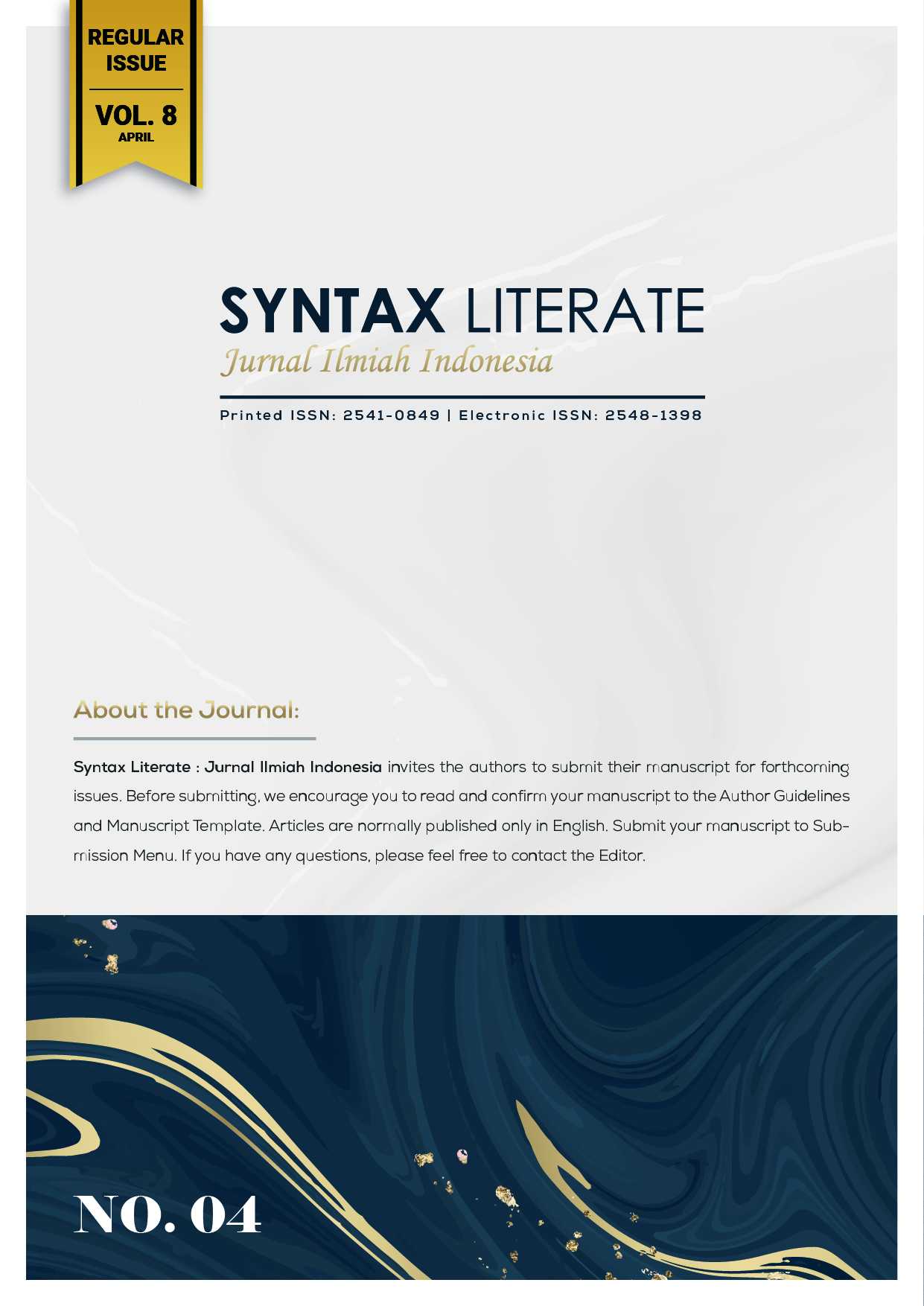Exploring Vocational Fashion Design Programs Through Creative Industry Practices: An Enterpreneurship Perspective
Abstract
Changes in the taste of consumer fashion and the development of creative industry technologies have seized wide-ranging opportunities and challenges for the fashion business. Vocational education is based on entrepreneurship that plays a vital role in encouraging innovation steps, the development of skills, and special competencies to form an entrepreneurial mentality, skills and competencies applied in the business world. This research describes a perspective from a point of view of vocational fashion design education in the creative industries business that provides an increasingly prominent picture in the development of the business world. This type of qualitative research used a phenomenological approach in conducting a study of fashion design in the practice of vocational education and creative industries to shape the spirit of entrepreneurship. This research was regarded as an effective data collection involving students of the fashion design department at Universitas Negeri Yogyakarta, Yogyakarta, Indonesia and semi-structured interviews to gather opinions from three main groups of industry professionals, namely fashion designers, creative industries, and specialists. The data was collected from different events, participants’ data, field findings, literacies, coding processes, analysis and representation, criteria for trust and authenticity, and researchers’ reflections within several perspectives. Ultimately, the project methodology was used to create a digital platform, which was proposed as a solution to the research problems. The research findings show several views on how the vocational fashion design education seeks to prepare skills, creativity, competencies, and a number of learners' skills in creative industry practices that provide some opportunities to shape entrepreneurial mentality. The fashion design in the vocational education measures the quality and independent human resources. Other findings prove that promoting the vocational fashion design education paves the way for students to realize their passion and pursue an entrepreneurial success.
Downloads
References
Fletcher, K. (2008). Sustainable Fashion and Textiles: Design journeys. London: Earthscan
Franke, N. and Lüthje. (2004).“Entrepreneurial intentions of business students - A benchmarking study,†Int. J. Innov. Technol. Manag., vol. 1, no. 3, pp. 269–288.
Kellogg, A.T. (2002). In an Influential Fashion: An Encyclopedia of Nineteenth-and Twentieth-Century Fashion Designers and Retailers Who Transformed Dress. USA: Greenwood Publishing Group.
Krueger, .L, N., Reilly, N. F.. and Carsrud, M.D. (2000).“Competing models of entrepreneurial intentions,†J. Bus. Ventur., vol. 15, no. 5, pp. 411–432.
Kuratko, D.F. (2005). “The emergence of entrepreneurship education: Development, Trends, and Challenges,†Entrep. Theory Pract., vol. 29, no. 5, pp. 577–598.
Lips, C. (2000). Edupreneurs: A Survey of For-profit Education. Cato Institut.
Maarit, K.N. (2019). “Fashion Designers as Entrepreneurs: Challenges and Advantages of Micro-size Companies,†Des. Creat. Process Fash. Ind.
Miller, S. (2007).“Fashion as art; is fashion art? Fashion Theory,†vol. 11, no. 1, pp. 25–40,
Peterman, J. N. E. and Kennedy. (2003). “Enterprise Education: Influencing Students’ Perceptions of Entrepreneurship,†. Entrep. Theory Pract., vol. 28, no. 2, pp. 129–144.
Potter, D. J. and Storey. (2007). Framework for the Evaluation of SME and Entrepreneurship Policies and Programmes. Publications de l’OCDE
Rantisi, N.M. (2011). “"The Prospects and Perils of Creating a Viable Fashion Identity.†Fashion Theory 15.†p. (2): 259–266
Rissanen, H. T., & McQuillan. (2016). Zero Waste Fashion Design. New York: Bloomsbury
Saeidi, V.S.W. (2017).“Precious cut: exploring creative pattern cutting and draping for zero-waste design,†Int. J. Fash. Des. Technol. Educ.
Shapero, L. A. and Sokol. (1982). Social Dimensions of Entrepreneurship. In C. A. Kent, D. L. Sexton and K. H. Vesper (Eds.), Encyclopedia of Entrepreneurship. USA: Englewood Cliffs: Prentice-Hall
Shapero, A. (1975). The Displaced, Uncomfortable Entrepreneur. Psychology Today.
Townsend, F. K., & Mills. (2013). “Mastering zero: How the pursuit of less waste leads to more creative pattern cutting,†Int. J. Fash. Des. Technol. Educ., vol. 6, no. 2, pp. 104–111
Ünay, C. and Zehir. (2012).“Innovation intelligence and entrepreneurship in the fashion industry.†Procedia-Social and Behavioral Sciences, pp. 41:315–321.
Zhang, M., Duysters, Y. and Cloodt. (2014). “The Role of Entrepreneurship Education as a Predictor of University Students’ Entrepreneurial Intention,†Int. Entrep. Manag. Journal, vol. 10, no. 3, pp. 623–641
Zhao, J. and Ha-Brookshire. (2014). “How did you survive in the first five years? Secrets to success described by apparel new ventures in China,†Enterprising Cult., vol. 22, no. 4, pp. 485–503.
Copyright (c) 2023 Chytra Mahanani, Moh. Adam Jerusalem, Laila Nurul Himmah, Resi Sepsilia Elvera, Desy Tri Inayah

This work is licensed under a Creative Commons Attribution-ShareAlike 4.0 International License.











